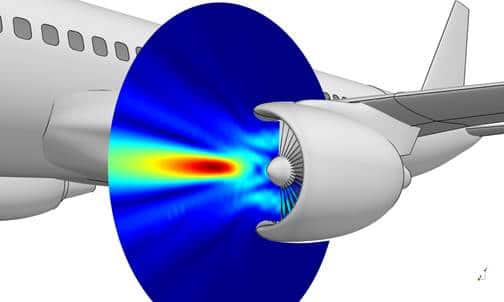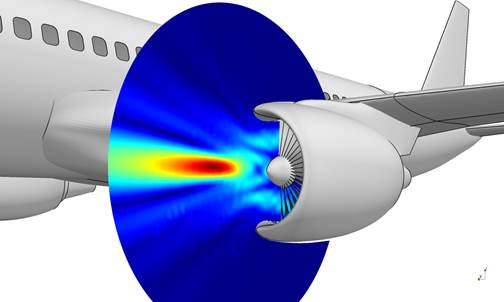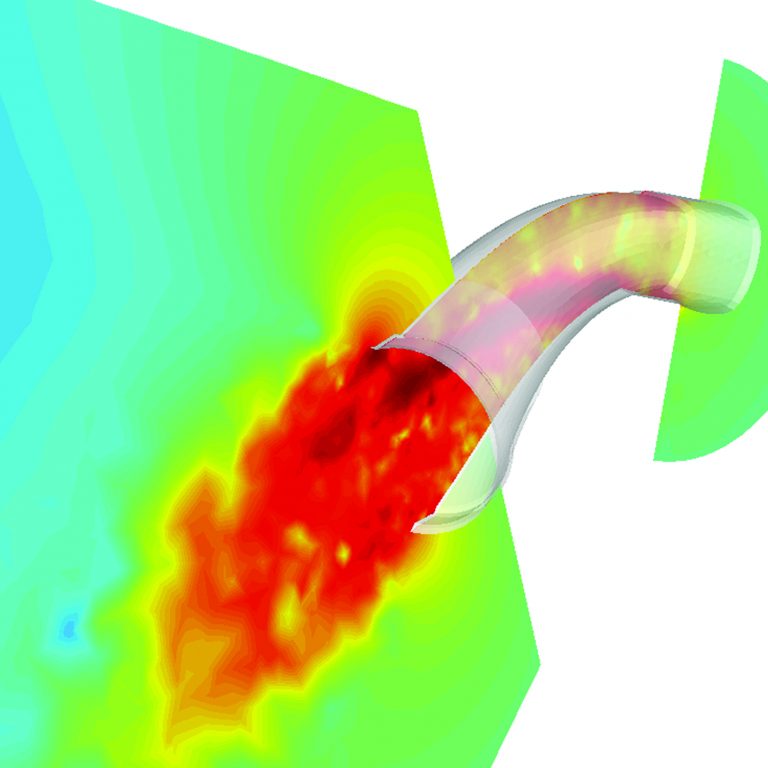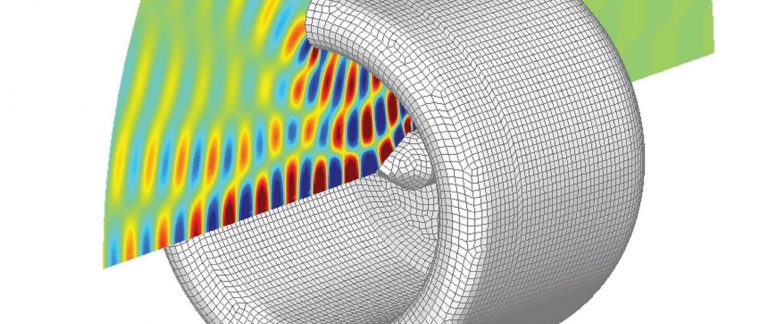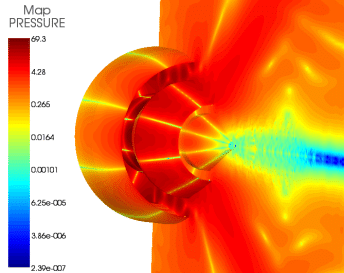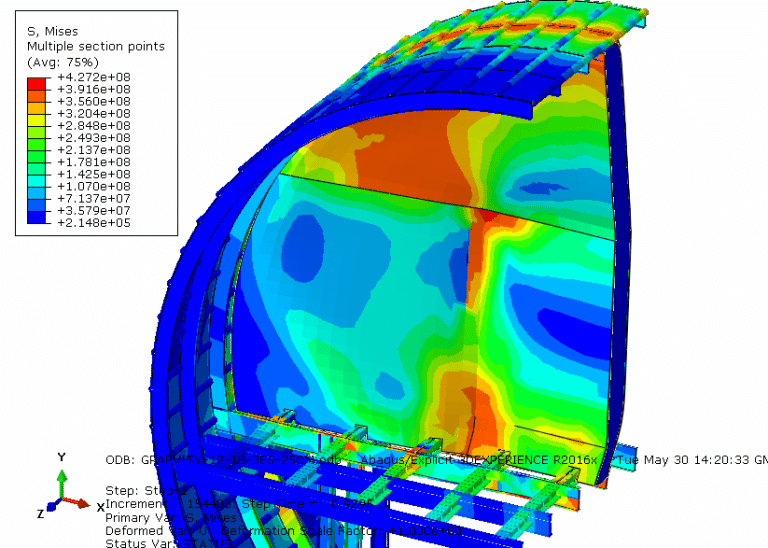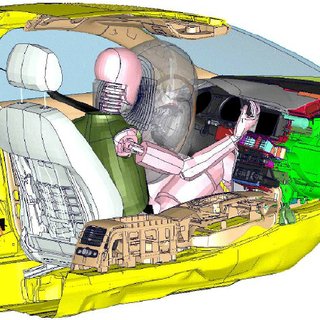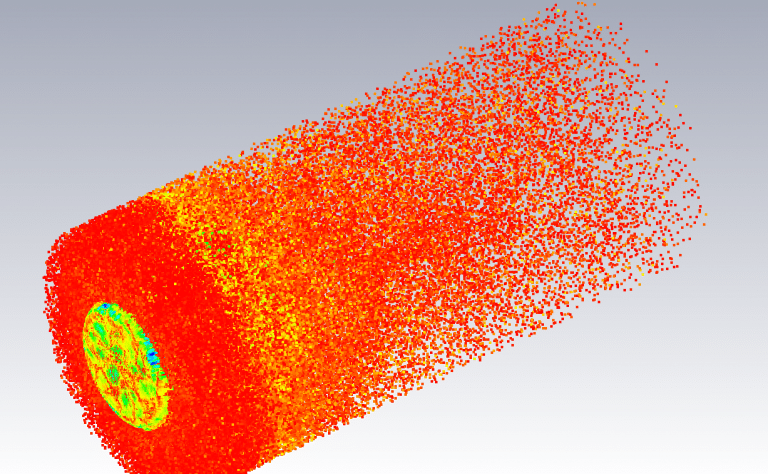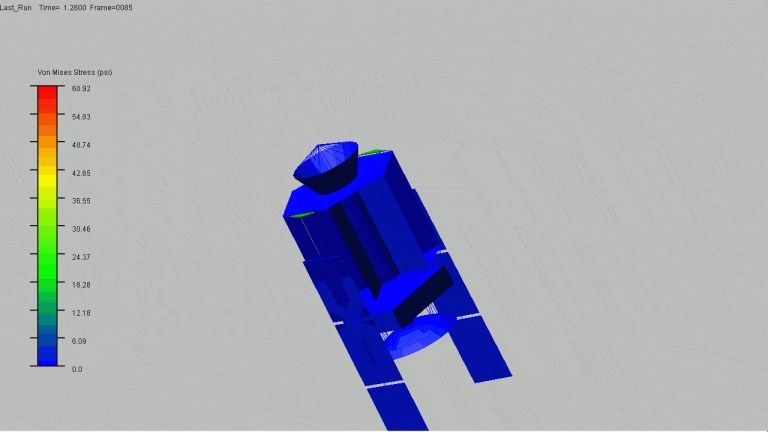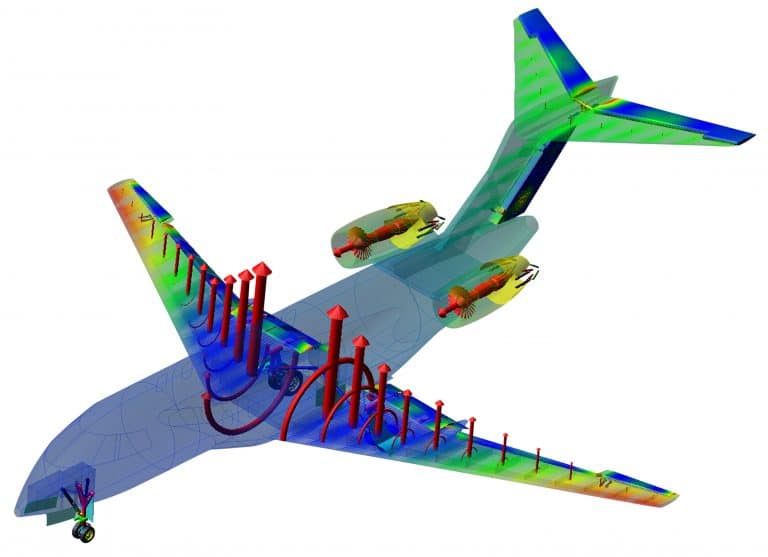- Engine Simulation
- Fracture Simulation
- Structural Dynamics
- Composites Design
- Drone Aerodynamic & Acoustic Simulation
- Rotors Aerodynamic Simulation
- Turbomachinery
- Electromagnetic Multiphysics
- Simulation of Plasma Based Devices: Particle in Cell (PIC), MHD, CFD
- AeroAcoustics & VibroAcoustics Simulation
- VTOL, e-VTOL and UAM - Urban Air Mobility
FEA and CFD Simulation for Aerospace Structures: Aerodynamics, Acoustics, Fatigue and Vibration, Thermal Analysis, Crash & Impact
FEA & CFD Based Simulation Design Analysis Virtual prototyping MultiObjective Optimization
The Aerospace industry has increasingly become a more competitive market. Suppliers require integrated and multi-functional processes to increase production efficiency, maintain high quality products and reduce production costs. Enteknograte provides integrated, innovative, and cost-effective engineering FEA and CFD software solutions to support the tough operating conditions of the Aerospace industry, such as atmospheric pressure, humidity, temperature, and structural loads.
Advanced Simulation & Analysis
Enteknograte engineering team use advanced CAE software with special features for mixing the best of both FEA tools and CFD solvers:
CFD codes such as Ansys Fluent, StarCCM+ and FEA Codes such as ABAQUS, Nastran, LS-Dyna and the industry-leading Fatigue Simulation technology such as Simulia FE-SAFE, Ansys Ncode Design Life to calculate fatigue life of multiaxial, Welds, Composite, Vibration, Crack growth, Thermo-mechanical fatigue and MSC Actran and ESI VA One for Acoustics, VibroAcoustics and Aero-Vibroacoustics simulations.


FEA Simulation for Aerospace Structures
We have experience developing complex high fidelity finite element models to facilitate predictive virtual testing including wings, engines and aircraft interiors. In addition, we could simulate vulnerability events such as: Bird strike, Tire burst, Ditching, Passenger safety, Impact events
With combination of deep knowledge and experience in sophisticated FEA and CFD based design tools, Enteknograte engineers can solve any problem with any level of complexity in Aerospace engineering including:
Fields:
- Aeroengines
- Aerostructures
- Airframes
- Avionics
- Ballistics & Blast
- Cabins
- Composite Structures
- VTOL, e-VTOL and UAM – Urban Air Mobility
- Landing Gear
- Space Systems
Aerospace simulation services:
- Crack Growth Modeling (J-Integral, Cohesive Zone, Virtual Crack Closure Technique)
- Fatigue Life and Durability Analysis
- Damage Tolerance of Composites
- Dynamic Analysis (including frequency and vibration)
- Impact and High Rate Deformation
- Fluid Diffusion/Permeation
- Structural Optimization
- Computational Fluid Dynamics (CFD)
- Multi-Body Dynamic Simulation
- Static Stress Analysis
- Time-Dependent Analysis (Creep, Stress Relaxation)
- Acoustics, VibroAcoustics and Aero-Vibroacoustics
Aerospace Seat Design: Federal Aviation Administration (FAA) and European Aviation Safety Agency (EASA)
In the United States, the Federal Aviation Administration (FAA) sets the standards for aerospace seat design regulations through its Technical Standard Orders (TSOs) and Federal Aviation Regulations (FARs). By using FEA according to FAA, our engineers can simulate the structural behavior of an aircraft seat and predict its response to various loading scenarios, including vibration , fatigue life, crash and impact conditions.
In Europe, the regulations governing aerospace seats are defined by the European Aviation Safety Agency (EASA). These regulations are contained in the Certification Specifications for Large Aeroplanes CS-25, Amendment 16, which outlines the airworthiness standards that must be met for certification of large airplanes, including the design and testing of aircraft seats. The EASA regulations require that aerospace seats are designed to ensure the safety and comfort of passengers during all phases of flight. This includes requirements for seat strength and durability, flammability, crashworthiness, and emergency evacuation.
Simulation based design can be used to evaluate compliance with specific aerospace seat design regulations related to crashworthiness, such as the strength and durability of the seat frame, attachment points, and materials used in construction. For example, FEA can be used to simulate crash landing scenarios and analyze the seat’s ability to absorb and dissipate crash forces, as well as its ability to protect passengers from injury. The FAA has established standards for the structural integrity of seats, including the strength and durability of the seat frame, the attachment points to the aircraft structure, and the ability of the seat to absorb and dissipate crash forces.
FEA can also be used to optimize the design of aerospace seats to meet specific safety standards and regulations. By simulating different design configurations, engineers can identify the most effective design for meeting safety standards while also optimizing for other factors such as weight, cost, and passenger comfort.
Simulation based design can be used to evaluate the performance of individual components of an aerospace seat, such as seat belts and restraint systems. The FAA requires that all aircraft seats be equipped with a seat belt or restraint system that meets specific standards for strength, durability, and ease of use. These regulations ensure that passengers can be safely secured in their seats during takeoff, landing, and turbulence.
Vibration is also a critical design consideration for aerospace seats, as excessive vibration can lead to discomfort and fatigue for passengers. By simulating the dynamic response of the seat, our engineers can identify areas of the seat that are subject to excessive vibration and modify the seat design to reduce these vibrations. This can involve adjusting the geometry of the seat, modifying the damping characteristics of the seat structure, or using vibration-absorbing materials in the seat construction.
Finite element simulation can be used to simulate the cyclic loading conditions that aerospace seats are subject to, and predict the potential for fatigue failure. By using FEA, engineers can simulate the structural behavior of an aerospace seat over time, considering factors such as cyclic loading, material fatigue properties, and stress concentrations.
Seat Design: Finite Element and CFD Simulation for Static & Dynamic Comfort, Whiplash, Acoustic & Thermal Comfort, Crash Test

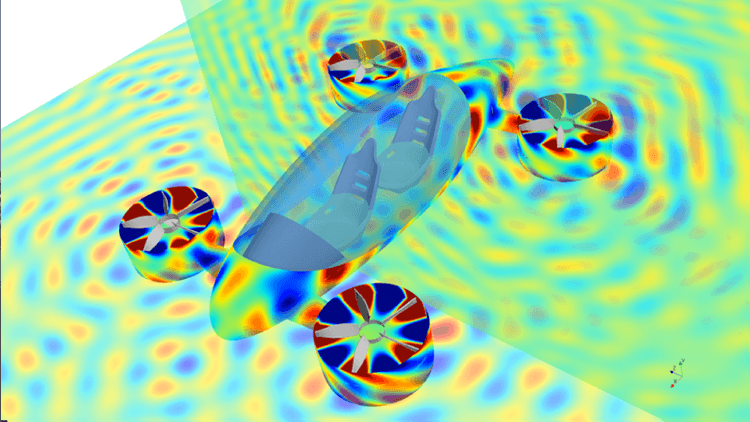

Minimum Weight Design
The increase in global competition and environmental awareness has necessitated the development of optimum weight aerospace structures. Aligning our expertise of using optimization technology to determine minimum weight metallic or composite structures, we have been instrumental in pioneering the establishment of Optimization Centers at major aerospace OEMs.
Aerospace Engineering: AeroAcoustics and VibroAcoustics Simulation
eVTOL (Electric Vertical Take-Off and Landing) & UAM (Urban Air Mobility)
Rotors Aerodynamic Simulation via Coupled FEA (MBD)/CFD Method: Aeroelastic Behavior Assessment
Engine Simulation in Aerospace industry
Fracture Simulation: Advanced constitutive Equation for Materials behavior in special loading condition
Structural Dynamics: Coupling CFD, MBD, FEA and 1D Systems Simulation Software
CFD Simulation of Reacting Flows and Combustion
Drone Aerodynamic & Acoustic Simulation Based Design
Creep and Creep-Fatigue Interactions
Vibration Fatigue Finite Element Simulation: Time & Frequency Domain
Fatigue Analysis of Welded Structures
Additive Manufacturing and 3D Printing
Crash Test and Crashworthiness
Blast Resistance with Protection Against Ballistic Attacks
NVH based Design and Considerations
The challenge for the NVH specialists is to support the concept and design development process by reliable recommendations just-in-time prior concept or design freeze. Enteknograte’s specialists particularly use advanced methodologies for NVH simulation and optimization:
- FEA based Aerospace Structures
- Aerospace Structural Optimization
- Optimization of Aerospace Structures Dynamics based on MBD ( Multi-Body Dynamics Simulation)
- Concurrent optimization of propulsion system efficiency with NVH considerations
- Aerospace Structures Interior Noise Simulation based on measurement and CAE
- Aerospace Structures Exterior Noise Simulation with couple use of CFD and FEA solvers
- Objective Analysis of Sound Quality
- VTOL, e-VTOL and UAM – Urban Air Mobility systems noise and comfort
Acoustics and Vibration: FEA and CFD for AeroAcoustics, VibroAcoustics and NVH Analysis
FEA Based Composite Material Design and Optimization: MSC Marc, Abaqus, Ansys, Digimat and LS-DYNA
Passenger’s Thermal and Acoustic Comfort
Aerodynamics Simulation: Coupling CFD with MBD, FEA and 1D-System Simulation
Finite Element Simulation of Crash Test and Crashworthiness with LS-Dyna, Abaqus and PAM-CRASH
Simulation of Plasma Based Devices: Particle in Cell (PIC), MHD, CFD
Electromagnetic Multiphysics
Integrated Artificial Intelligence (AI) & Machine Learning - Deep Learning with CFD & FEA Simulation
Ansys HFSS: Multipurpose High Frequency Electromagnetic Field Simulator for RF, Microwave and Wireless Design
Ansys Maxwell: Low-Frequency Electromagnetic Simulation for Electric Machines
WE WORK WITH YOU
We pride ourselves on empowering each client to overcome the challenges of their most demanding projects.
